Rethinking Sideways Trading: Major Cryptocurrencies Are Undergoing a Large-Scale Change of Hands with Whales
Original author: Ignas , DeFi
Original translation by CryptoLeo ( @LeoAndCrypto )

Odaily Note: Ignas points out that despite the passage of the BTC ETF, accelerated institutional investor adoption, the passage of the Genuine Act, and the impending enactment of the Clairty Act, the absence of regulatory crackdowns, major hacks, and a fundamental narrative collapse, BTC remains stagnant and lacks liquidity. Early BTC investors are currently systematically cashing out (rather than selling), while new investors are planning to buy on dips.
Key Viewpoints
Early BCT believers are cashing in their profits;
This is not a panic sell-off, but a natural transition from concentrated holding by whales to diversified holding by everyone;
Of all the traceable on-chain metrics, the most obvious signal is whale selling.
Let's look at BTC first.
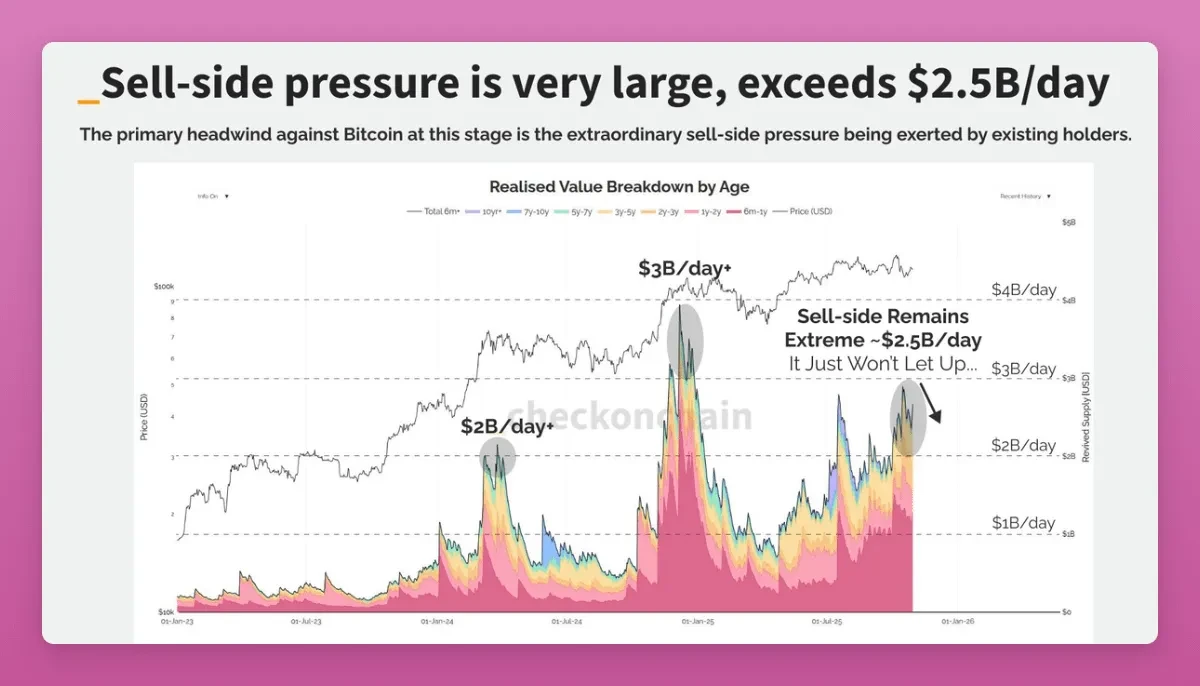
Long-term holders sold 405,000 BTC in 30 days, representing 1.9% of the total existing BTC supply.
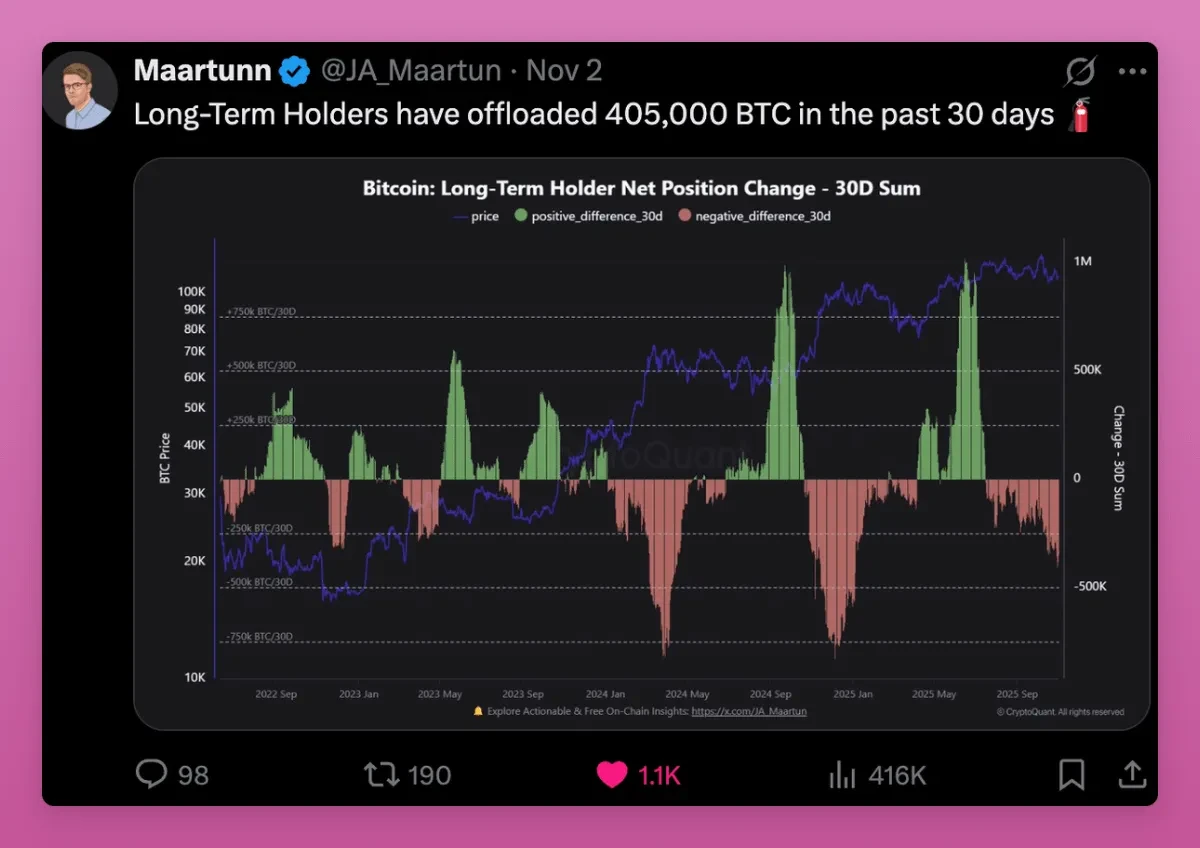
Take Owen Gunden as an example. He was one of the early whales in the BTC market. He made large transactions on Mt.Gox, held a huge position, and was a board member of LedgerX. His associated wallet held over 11,000 BTC, making him one of the largest individual holders on the blockchain.
Recently, his wallet began transferring large amounts of BTC to Kraken, with thousands of BTC being transferred in batches. This typically indicates that he is making a sale. On-chain analysts believe he may be preparing to sell most of his BTC, worth over $1 billion.
He hasn't tweeted since 2018, but this move aligns with my "big turnover" theory, where some people are moving into ETFs for tax benefits or selling to diversify their portfolios (like buying ZEC?).
As supply shifts from early whales to new buyers, the average cost of BTC continues to rise, and new holders are now in control.
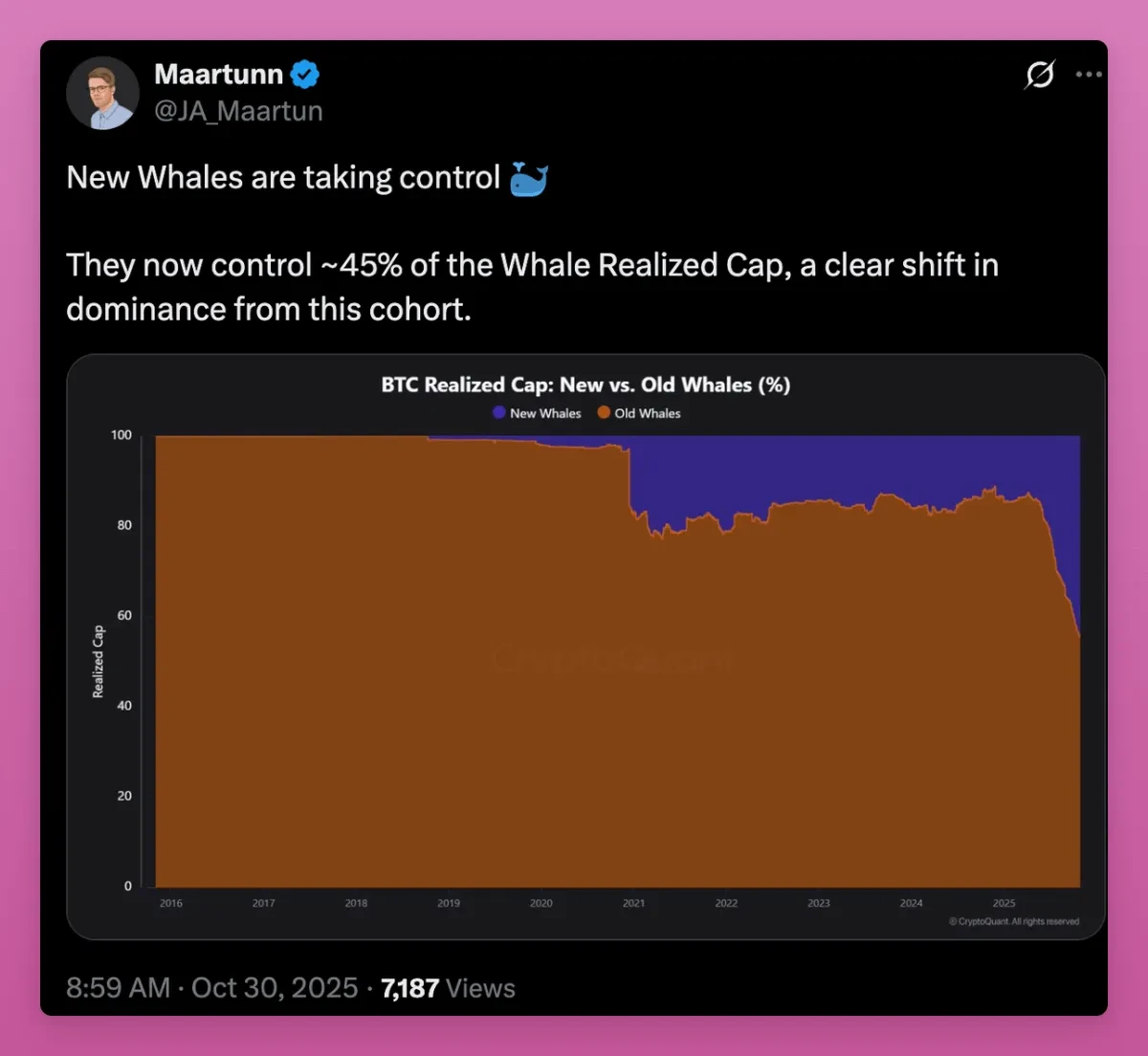
As the average cost base shifts from early miners to ETF buyers and new institutions, we can see MVRV climbing.
Odaily Note: MVRV stands for "Current Price" ÷ "Holder's Cost Price". It is one of the classic on-chain valuation metrics for Bitcoin, proposed by Murad Mahmudov and David Puell in 2018. It is now widely used to determine whether Bitcoin is overvalued (overheated) or undervalued (oversold).

Some might argue that this appears to be a bearish signal, given that established whales have been reaping huge profits for years, while new entrants have consistently been operating at a loss.
With the average cost base for BTC approaching $110,800, there are concerns that new investors may choose to sell if BTC continues to underperform.

However, the rise of MVRV indicates that ownership is becoming more decentralized and mature. Bitcoin is shifting from a small number of ultra-low-cost holders to a more decentralized group of holders with higher cost bases.
This is actually a bullish signal. What about outside of Bitcoin?
Ethereum tokens changed hands
What about ETH? Will ETH exhibit the same "high turnover" pattern? Similar to Bitcoin, this might partially explain the lag in ETH's price.
From one perspective, ETH also seems to have won: both have ETFs, DATs, and institutional investors, albeit in different ways.
Data shows that ETH is also in a similar transition period, only earlier and with a more tortuous process.
In fact, from a certain perspective, ETH has caught up with BTC: currently, about 11% of all ETH is held by DAT and ETFs.

While approximately 17.8% of BTC is held by spot ETFs and large treasuries (thanks to Saylor's efforts over the years), ETH is catching up with this trend.

I tried to find relevant data on ETH to verify whether it's like BTC, where older whales are distributing ETH to newer whales, but I wasn't successful. I even contacted Ki Young Ju of CryptoQuant, who told me that because ETH uses an account model, which is different from BTC's UTXO model, it's difficult to collect statistics.
In any case, the main difference seems to be that ETH is shifting from retail investors to whales, while the main shift for BTC is from established whales to new whales.

The chart below also shows the trend of ETH ownership shifting from retail investors to whales.

The actual price of large accounts (over 100,000 ETH) is rising rapidly, which means that new buyers are entering the market at higher prices, while small holders are selling.
Notice that all the lines (orange, green, and purple) are now converging on the same horizontal line, meaning that the cost of wallets of various sizes is almost the same, indicating that the old tokens have flowed into the hands of new holders.
This cost base reset should occur near the end of the accumulation cycle and before a significant price increase. Structurally, this suggests that ETH supply is converging into the hands of more powerful holders, indicating a bullish outlook for ETH.
The rationale for this shift lies in:
Retail investors sold off their holdings, while whales and funds took the opportunity to increase their holdings, for reasons including: 1) the widespread adoption of stablecoins and tokenization; 2) ETF staking; and 3) the participation of institutional investors.
Retail investors viewed ETH as "fuel," losing confidence in it once other L1 tokens emerged. Meanwhile, whale investors saw it as yield-generating collateral, accumulating it in hopes of long-term on-chain gains.
When BTC won, ETH was still in a gray area, so whales took the lead and prevented institutional investors from entering.
The combination of ETF and DAT has made the ETH holder community more institutionalized, but it's unclear whether they are more inclined towards long-term growth. A major concern is ETHZilla's announcement of selling ETH to buy back its shares. This isn't a reason for panic, but it sets a precedent.

Overall, ETH also fits the "high turnover" theory. Its structure is less clear than Bitcoin's because Ethereum has a more diverse holder base, more use cases (such as staking liquidity into a few large wallets), and more reasons for holders to move tokens on-chain.
Solana chip movement
It's incredibly difficult to pinpoint which stage of the SOL trading cycle is in; even identifying institutional wallets or major holders is challenging. Nevertheless, some patterns can still be discerned.
SOL is entering the same institutionalization phase as ETH. Last month, an SOL spot ETF appeared on CT, and there was no hype. While the inflow of funds wasn't particularly high (totaling $351 million), there were positive inflows every day.

Some DAT companies have also begun buying SOL, and the amount is quite considerable:
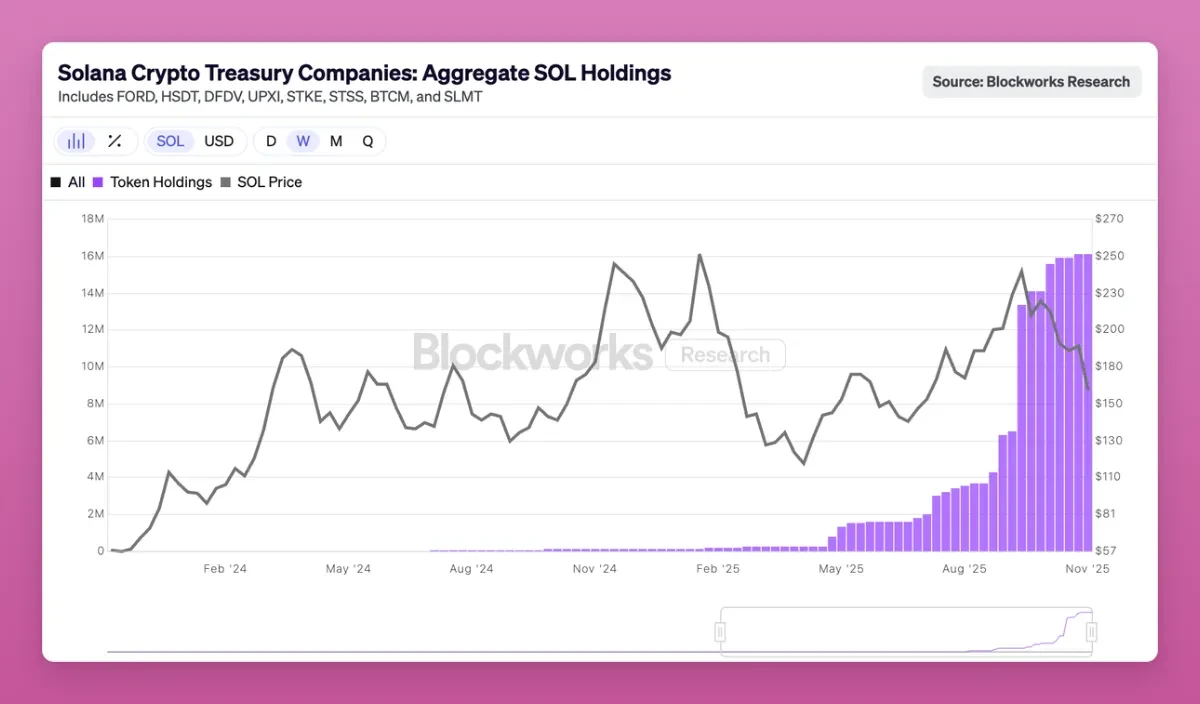
Currently, 2.9% of all SOLs in circulation are held by DAT companies, valued at $2.5 billion. You can read more about the SOL DAT structure in this article by Helius .
Therefore, SOL now has the same TradFi infrastructure investors as BTC and ETH, including regulated funds and treasury firms, only on a smaller scale. SOL's on-chain data is disorganized but remains concentrated in early insider and venture capital wallets. These tokens are slowly flowing into the hands of new institutional buyers through ETFs and treasuries.
The major turnover has already affected SOL, but it happened one cycle later.
Therefore, if the turnover of BTC and, to some extent, ETH is nearing its end and prices could rise at any time, then the situation for SOL is not difficult to predict.
What will happen next?
BTC trades ended first, ETH followed closely but lagged slightly, while SOL took even longer. So, where do we stand in this cycle?
In past cycles, the strategy has been simple: first, BTC surges, then ETH, and the wealth effect gradually emerges. People profit from mainstream cryptocurrencies and shift to lower-market-cap altcoins, thus boosting the entire market.
This time the situation is different.
BTC is stagnating at some point in its cycle. Even if the price rises, veteran players will either switch to ETFs or cash out and leave, ultimately improving their lives outside of crypto. There's no wealth effect, no spillover effect, only the PTSD caused by FTX. The hard work continues.
Altcoins are no longer competing with Bitcoin for monetary status, but instead are competing on utility, yield, and speculative potential. Most products fail to meet these criteria. Here are a few recommended categories:
- Blockchains that are actually in use: Ethereum, Solana, and maybe one or two more;
- Products that generate cash flow or real value appreciation;
- Assets with unique demand that cannot be replaced by BTC (such as ZEC);
- Infrastructure that can attract fees and attention;
- Stablecoins and RWA.
Innovation and experimentation in the crypto space will continue to emerge, so I don't want to miss out on this new hot topic; everything else is just noise.
Uniswap's activation of its fee switch was a pivotal moment: while not the first, it was by far the most prominent DeFi protocol, forcing all other protocols to follow suit and begin distributing fees (buybacks) to token holders.
Five out of ten lending protocols have already shared profits with token holders.
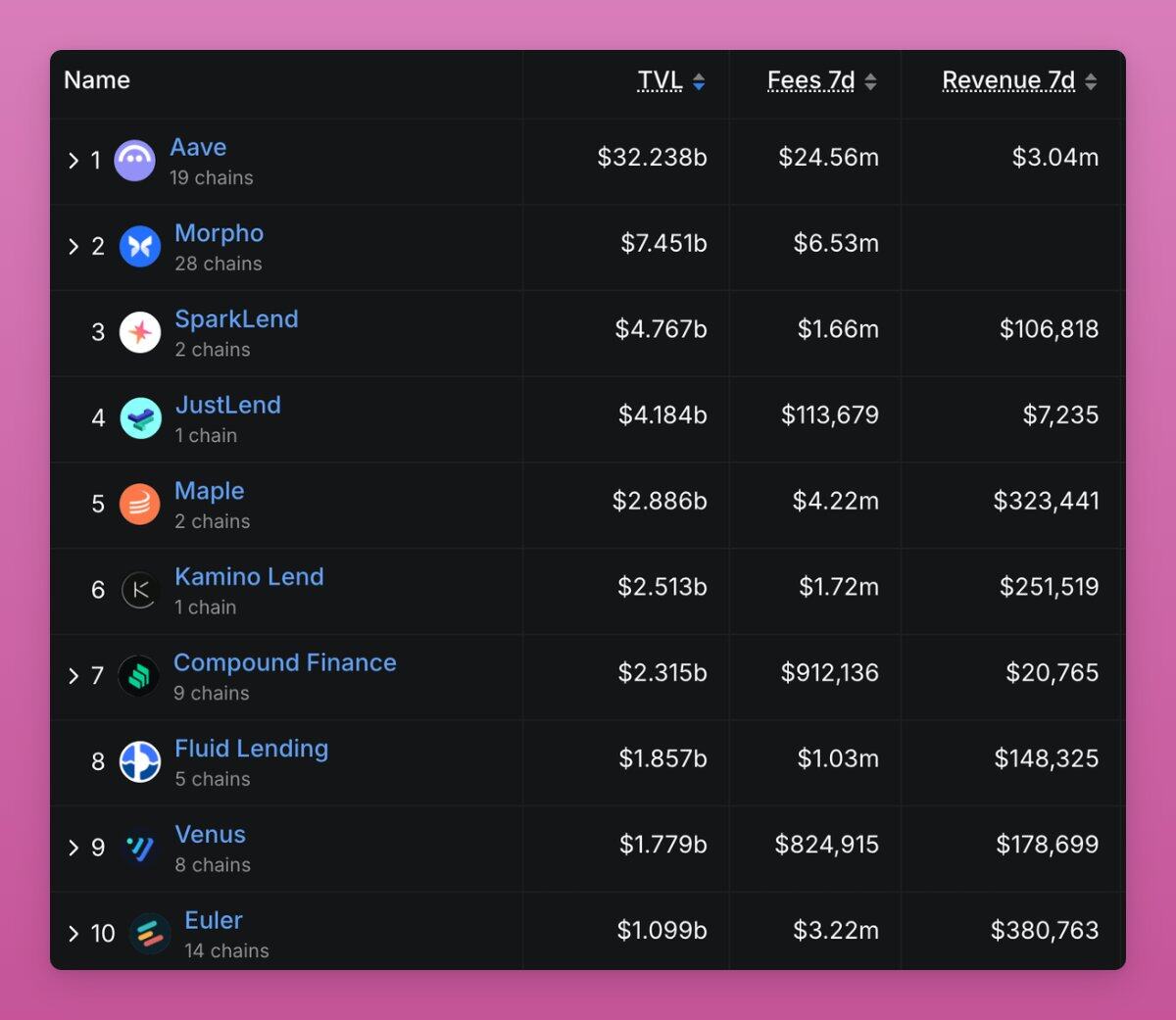
Therefore, DAOs become on-chain companies whose token value depends on the revenue they generate and redistribute, which will be where the next round of rotation will begin.
- 核心观点:加密货币市场正经历巨鲸向散户的换手阶段。
- 关键要素:
- BTC长期持有者月减持40.5万枚。
- ETH所有权从散户向巨鲸转移。
- SOL开始进入机构化阶段。
- 市场影响:所有权分散化将推动市场成熟。
- 时效性标注:中期影响。



